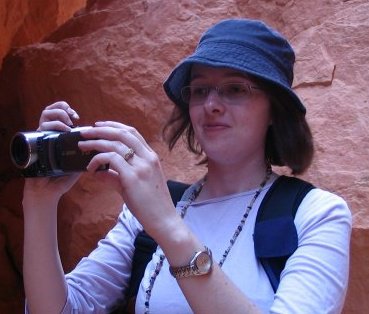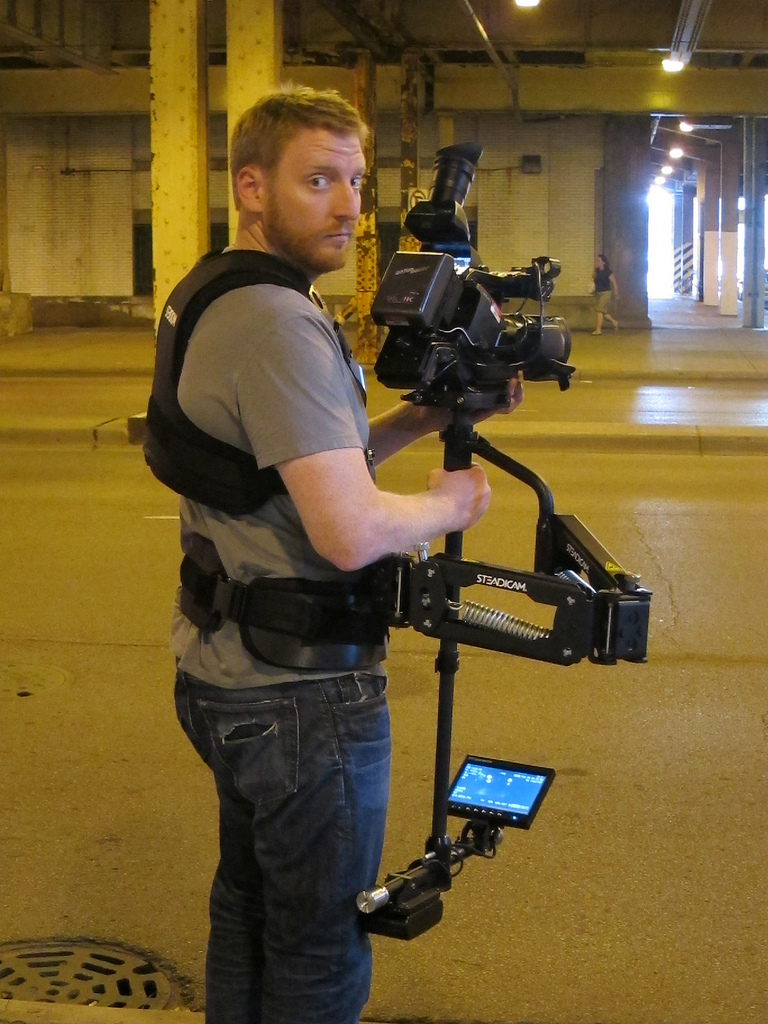5 Things to Consider When Choosing a Documentary Video Camera
The more I’ve worked on my year-long video blog/documentary project Days of Film, the more I realize that your video camera truly impacts the type of shot you can get, especially when you’re doing documentary. And a lot more goes into it than whether or not your camera can shoot in HD.
5 Things You Should Consider When Choosing a Documentary Video Camera
1. Cameras impact people’s behavior.
When you see a camera, your experience at a place or an event changes. Even in some of the early film clips I’ve seen, over a century ago, when people know they’re being filmed they smile and wave. If people know you’re doing a project they can attempt to go about whatever it is they normally do with as little change in behavior as possible—but the awareness of the camera is always there.
For this documentary project, it has been useful to have a small, unobtrusive camera. I’m trying to capture little snippets of life, and my camera looks like any average, little camera. I could be a tourist, a mom filming her kids, the average person who sees something cool and happens to be able to capture it on a camera that’s higher quality that a cell phone. Shots like these people jumping on trampolines or the splitting of wood are made much easier when people don’t turn their heads at the arrival of a large camera. My father-in-law would’ve been fine with me filming him chopping wood if I had asked him in advance (he was afterwards) but it was nice to capture the moment unadulterated by the awareness of the camera.
2. Every camera falls somewhere on the scale of portability
On the most portable end of the scale are phone cameras, and since people carry their phones everywhere, they can be documentarians at any moment.
I prefer a camera that sacrifices some portability for quality. However, my video camera is still small enough that (because I’m working on this project) almost every time that I’ve left the house this year I’ve brought my camera with me.
I even managed to fit my camera through a fence in a parking garage, stick my arm through, and then open the camera so I could film lights at Trolley Square without a fence in front of them. (The desire for a shot outweighed my fear that I would drop my camera fifty feet onto the pavement below.)
3. Not all cameras can capture fleeting moments with little setup
In some types of documentary filmmaking, things will happen—and only happen once—which you need to be able to capture well without having to make a lot of decisions about white balance, focus, etc.
I typically leave my camera in “Easy” mode, which automates the settings. I’ve been really happy with my camera’s automatic settings, which typically get really good coloring and lighting. (The only place that I’ve found that my camera’s auto settings really don’t cut it is in certain sections of the aquarium, because of the special lighting.)
Thus, when bison randomly decide to walk across the road, I can shoot and point, without worrying that my shot won’t turn out. I also have my camera set so that way it only uses the optical zoom. I don’t want to accidentally zoom too far and end up using the digital zoom and decreasing the quality of the shot.
4. It’s really nice to have manual controls
While I’m a huge fan of really good automatic settings, it can also be really useful to have manual controls. For one, if your camera will let you control things like white balance, it’s much more likely to be a higher quality camera and get better shots when it’s on auto.
And, sometimes, you have time to change the settings. This is particularly useful for interviews, scenery shots that aren’t going away (I took at least five shots of the above geyser), and things that you’re initiating (like the can opener) or that will happen multiple times.
5. The camera you choose will impact where your documentary can go later
I will never shoot a doc on a phone camera, simply because the quality just isn’t there. My camera is a very high level consumer camera (pro-sumer, maybe) but it’s not a professional camera like many of my friends own (I’m not at the point where I’m willing to spend thousands of dollars on a camera), and it’s certainly no RED. (The RED may be a camera that makes you salivate, but the fact that they shot the new Pirates movie on it means that you probably don’t need that level of camera for a documentary.)
The thing to remember is that the label HD is no guarantee that you’ve got a good camera. Some things are HD because they capture a huge pixel count, but if the pixels are crappy…well, it will still look bad. There’s lots of places you can read up on HD specs, what High Definition really means, etc., and I’m no expert on it, so you’ll have to read on that elsewhere.
When I look at a camera, I want something that doesn’t limit me to posting my videos online. You want your videos to look good if you burn them to DVD or Blu-ray, and ideally, it needs to be good enough that your images will still look good on a big screen at a film festival.
The nice about documentary is that expectations are different than if you’re making a feature fiction film.
How to attract undue attention while making a documentary: walk around with a giant steadicam stabilizing system. (Photo credit: dfritzon.)
With a documentary film, a little shakiness is okay. A little lower quality, imperfect lighting, and some imperfections can even add to the authenticity (though if you’re doing seated interviews, people expect it to look a little better).
I’ve been really happy with my video camera—for now, it meets what I’m looking for on the balance between size, cost, portability, and quality. In case you’re interested, it’s a Canon Vixia HF100.
So that’s what I’ve been thinking about. In other news, with the completion of September, I’m now 3/4 the way done with the project, and have less than 100 videos to go.
Here’s some of my favorite shots from the month of September:
1. Videos of my Yellowstone trip. All of them. Leaving the state was a good idea.
2. A paraglider at the State Fair.
4. A gold light (this, in my opinion, is one of the prettiest, most whimsical shots I’ve taken).



Leave a Reply
Want to join the discussion?Feel free to contribute!